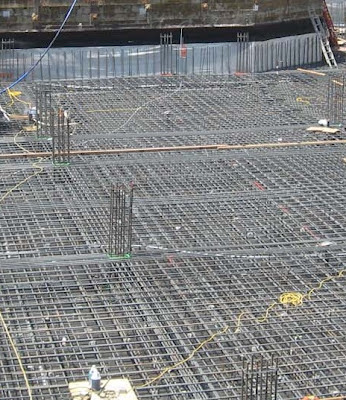Assumptions and Their Consequences in Designing Mat Foundation With Rigid Beam Approach
In the previous posts we discuss different parameters of mat foundation design. In this post we will discuss about assumptions and the effects of these assumptions to be taken in designing a raft foundation with conventional method i.e. rigid beam analysis.
Many research works on mats and piled mats were conducted throughout the last decades and still these works are going on. The result of these researches is invention of numerous method to analysis of mat foundation. The methods of analysis are:
1. Rigid beam approach
2. Elastic or non-rigid approach
We will now learn the assumptions of rigid beam approach. These are:
1. Soil is considered a material of linear elasticity
2. The flexural deflection of mat is negligible
3. Uniform bearing pressure of soil with axial loads that coincides with mat centroid and linear variation of soil pressure where moment or eccentric loading are arrived.
Now about these assumptions it can be concluded that mat is not rigid body as assumed in analysis to have a simple solution. The stress below the column of shear wall are not the same that beneath a unloaded portions. This results a greater settlement below columns than a less stressed area. The impact of differential settlements results soil pressure variations. These differential settlements result differential flexural stresses within the mat.
It is observed that one wrong assumption leads to malfunctioning of consecutive all assumptions. This is the all that are materials of this post. In the next post we will try to catch the refined elastic or non-rigid method for reader.
